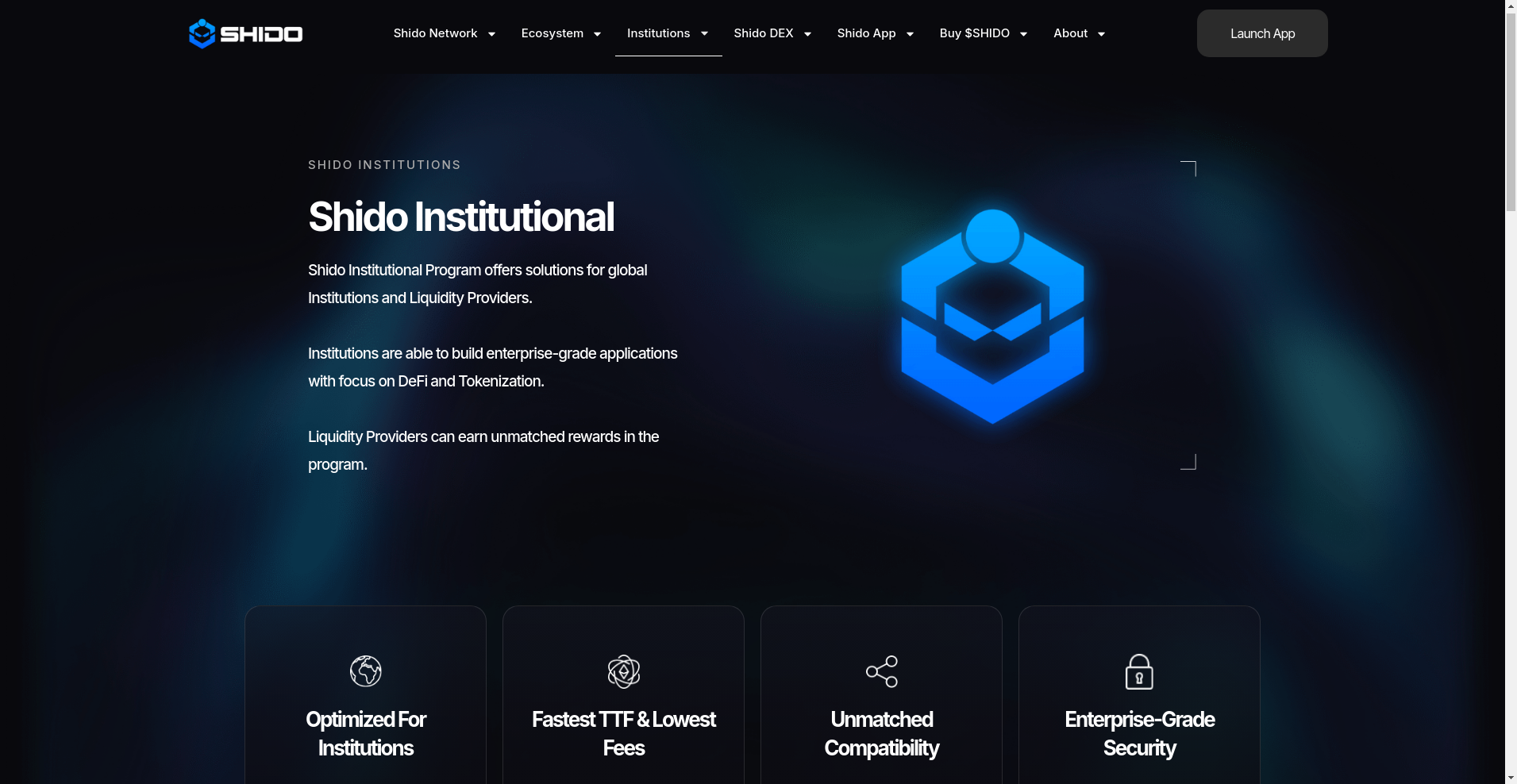Shido Network ($SHIDO) Review: A Data-Driven Legitimacy and Risk Assessment

Project Overview
Shido Network positions itself as a next-generation, high-speed Layer 1 blockchain with interoperability at its core. Launched as a Proof-of-Stake (PoS) network, it promises remarkable scalability, with 13,000 transactions per second (TPS), and ultra-fast finality of approximately 700 milliseconds. The platform leverages both EVM and WASM compatibility, aiming to serve a broad developer base and enhance cross-chain interaction through the Cosmos ecosystem’s protocols, showcasing a strong focus on Solana's interoperability with the Cosmos ecosystem.
This review provides an impartial analysis based on available data sources, highlighting Shido's technological offerings, ecosystem activities, security posture, tokenomics, and developmental transparency. The goal is to assess the project's legitimacy, potential risks, and long-term viability from an evidence-based perspective.
Team and Roadmap Evaluation
The publicly available information does not detail specific team members or their backgrounds, which is a common concern for assessing legitimacy. The absence of disclosed founders, developers, or advisors introduces a baseline risk regarding transparency and accountability. Reliable projects typically publish team credentials and track records, fostering community trust.
- Roadmap mentions ambitious milestones like the launch of Shido DEX V3, chain development kits, and AI integrations scheduled for 2025-2026, reflecting long-term vision.
- Particular milestones involve technological upgrades, ecosystem expansion, and adaptive integrations with AI tools, which are plausible but unverified in terms of delivery capability.
While the strategic vision sounds comprehensive, the lack of public team details calls for caution until verifiable credentials are disclosed or community validation is observed.
Security and Trust Analysis
Analysis is primarily based on an audit report from Cer.live. The audit rating indicates a score of 5.1 out of 10, suggesting considerable room for improvement in security practices. It is important to note that the platform audit status is listed as pending, with only token audit relevance marked as false, which may imply the token’s safety has yet to be comprehensively verified. The project's commitment to security could be further understood by examining strategies for [post-launch smart contract monitoring](https://example.com/post/post-launch-smart-contract-monitoring), but the current audit status remains a concern.
- Major findings include incidents, but details on vulnerabilities, bug bounties, or specific exploits are limited. HackenProof manages active bug bounty programs, indicating ongoing vulnerability assessments.
- The absence of comprehensive, publicly available audit reports or third-party security attestations raises concerns about platform robustness.
- Partnerships with notable security firms (Hacken, Oak Security, Chainlink) suggest a commitment to security, but current audit transparency remains limited.
Investors should note that the security framework appears to be in developmental or early audit phases, which inherently elevates risk until thorough and independent audits confirm platform integrity.
Tokenomics Breakdown
The native token, $SHIDO, has a total supply of 100 billion tokens, with a current price approximately at $0.0000002275 and a market cap near $22,500 based on available data. Its utility spans transaction fees, governance, collateral for stablecoins, and incentivization within the ecosystem.
- Supply & Distribution: The total supply is large, with no circulating supply specified, indicating a potentially high inflation risk unless significant token locking or deflationary mechanisms are implemented. Understanding typical [staking yields and burn rates in PoS networks](https://example.com/post/understanding-staking-yields-and-burn-rates-in-pos-networks) is crucial here.
- Vesting & Allocation: Specific details regarding team allocations, investor vesting, or community rewards are not publicly provided, raising transparency concerns.
- Utility & Incentives: Designed for network security, governance voting, and staking rewards, but detailed economic models (e.g., staking yields, burn rates) are lacking.
- Economic Viability: The high total supply and relatively low token price suggest a focus on accessibility and utility, but without detailed economic sustainability plans, holders face potential dilution and market volatility.
Overall, the tokenomics exhibit classic decentralization themes but lack transparent distribution data and deflationary features, which are vital for long-term sustainability.
Ecosystem and Development Activity
Data indicates an ecosystem actively building around Shido, including multiple integrations with wallets, bridges, DEXs, cross-chain protocols, and developer tools like IDE and migration portals. The ecosystem claims over 104 projects, suggesting rapid growth in its early stages.
Most activities are community and developer-focused, with a significant emphasis on interoperability, cross-chain liquidity, and security. The ecosystem's strategic partnerships with cloud giants and analytics platforms point toward an intention for professional-grade infrastructure and robustness.
However, community engagement metrics such as active users, transaction volume, or on-chain growth are not detailed, making it difficult to verify genuine ecosystem traction amid marketing claims. It's important to look at [assessing post-launch ecosystem growth metrics](https://example.com/post/assessing-post-launch-ecosystem-growth-metrics) to cut through the noise. Additionally, many project milestones are projected for future years without concrete deliverables or success metrics currently demonstrated.
Terms and Conditions Analysis
Available documentation does not expose concerning clauses or legal risks. Terms of service, privacy policies, and critical notices are standard, and no unusual restrictions or high-risk clauses are evident. Nonetheless, the lack of comprehensive legal frameworks, such as detailed user agreements or dispute resolution clauses, warrants caution, especially for institutional or large-volume investors.
Final Analysis: The Investment Case for Shido Network
Shido Network presents a technically ambitious project with compelling features like high throughput, cross-chain interoperability, and environmental sustainability commitments. Its ecosystem encompasses a broad set of products, developer tools, and integration partners, which are promising signs of growth potential. However, several red flags temper an overly optimistic outlook:
-
Pros / Strengths
- Impressive performance metrics: 13,000 TPS, fast finality, low fees.
- Dual VM support (EVM and WASM), enabling wide developer adoption.
- Strong interoperability focus via Cosmos IBC and chain abstraction technology.
- Environmental sustainability and reforestation partnerships.
- Expanding ecosystem with multiple integrations and developer incentives.
- Limited team transparency; no disclosed founders or core developers.
- Security audit scores indicate vulnerabilities or incomplete assessments.
- Lack of detailed token distribution, vesting, and economic sustainability plans.
- Many future milestones without current concrete deliverables.
- Community activity metrics and user adoption figures are limited or unavailable.
Based purely on available technical and ecosystem data, Shido Network is an intriguing project with high potential but significant transparency and security risks. Investors should approach with caution, ensuring due diligence—particularly regarding the security audit status and team credentials—before considering involvement. Its ambitious technological roadmap and broad ecosystem make it a compelling long-term project, pending verification of actual development progress and security robustness.
In conclusion, Shido Network exemplifies the duality of innovative blockchain projects: promising technological advances and ecosystem ambitions versus the importance of transparency, security validation, and concrete user adoption metrics. As always, informed decision-making should rest on current verifiable data, ongoing audit disclosures, and community validation efforts.

Christopher Anderson
Smart Contract Auditor & Legal Tech Analyst
I have a dual background in law and computer science. I audit smart contracts to find the critical gap between a project's legal promises and its code's reality.
Similar Projects
-
Balancer
Balancer Review: Scam Check & Legitimacy Analysis 2024
-
BOBO coin
BOBO Coin Review: Scam Check & Legitimacy Analysis
-
OAX
OAX Review: Is This Crypto Scam or Legit? Scam Check & Analysis
-
Aladdin DAO
Aladdin DAO ($ALD) Review: A Data-Driven Risk & Legitimacy Assessment
-
Gomining token
Gomining token ($GMT) Review: Risks & Disappearance Analysis